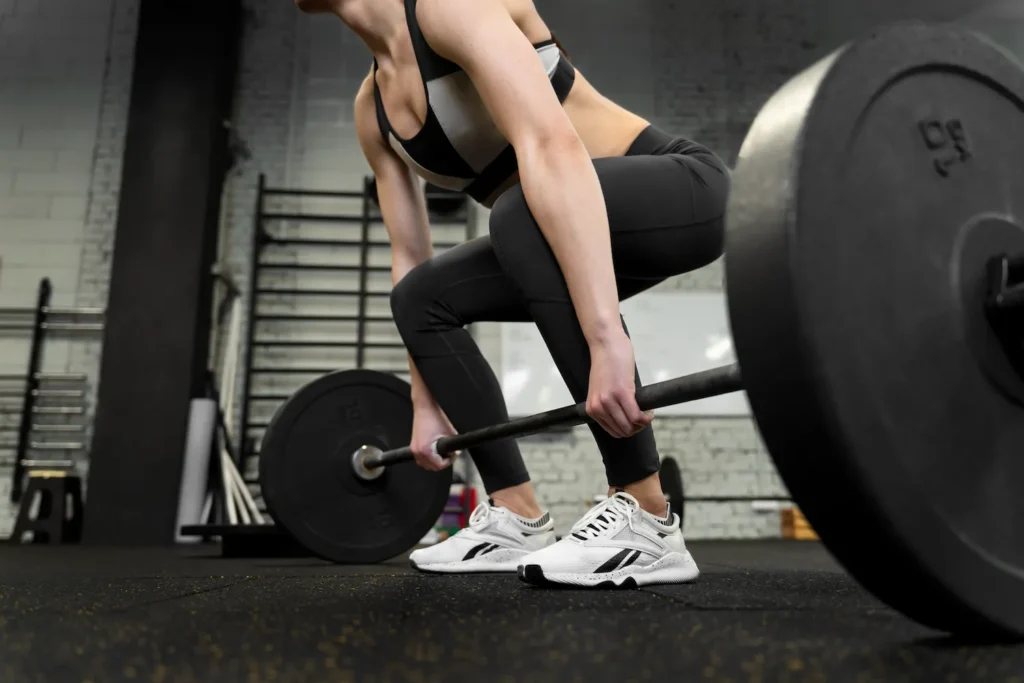Do you want to lose body fat? If so, then weight training will help you do that. Here’s how.
Resistance training and lifting weights is a great way to burn fat. By building muscle through weight training you can change your body composition, increasing your lean muscle while also reducing body fat in the process.
Here are some other important things to know about weight training.
Boost your metabolism – burn calories from being alive!
Muscle is “expensive” to maintain. That means a muscular person who weighs 70kg will burn more calories at rest than a 70kg person who has very little muscle. Fat doesn’t burn a lot of energy, but muscle does. So if you add some muscle to your frame, you’ll increase your “resting metabolism.” That means you’ll burn more calories simply by being alive.
The number of extra calories burned over the course of a day isn’t extreme, but it’s still significant. Researcher Christopher Wharton estimated 10 pounds (about 4.5kg) of muscle would use up 50 calories on a day without training, while 10 pounds of fat would use just 20.
So adding muscle means you’ll burn more calories without doing anything! That’s a bonus when it comes to losing fat.
And here’s another important consideration: If you don’t use resistance training during a weight-loss program, there’s a risk that you might lose muscle too. That’s not the weight that you want to lose! So resistance training is important to help preserve as much lean tissue as possible while you are trying to lose fat.
The after-burn effect
Your body continues to burn calories at a faster rate even after you finish weight training, not just while you’re training. This is especially true if you work out with intensity.
When you are training hard, your body burns calories at a faster rate than when you are at rest. But your body continues to burn calories after you stop because it is working to refuel and recover from training stress. In other words, your metabolism is elevated as your body works to recover.
This recovery process burns calories and it can continue for up to 16 to 38 hours after training (maybe longer according to some studies). So a gym session is a great investment of time – one where you’ll reap additional rewards over the next day or so.
What weight training helps lose fat?
Not all weight-training is created equal. By that I mean that the amount of resistance (and rep schemes) you use will also impact how much energy your body will burn, and what kind of adaptation will occur.
For example, using heavy weights where it is quite difficult to complete 5 reps will produce different results to lifting light weights for many reps, like you would in a pump class. Lifting heavier weights will also help maintain bone density, but of course you first need to learn how to move well and lift safely before increasing resistance to heavy loads.
Some styles of weight training generate greater effects after the workout than others and conditioning activities can also generate a post-exercise calorie burn. It all comes down to the exact activities and the intensity at which they’re performed.
Why strength training is important as we age
Thinking big picture, strength training (including lifting weights) is really critical for musculoskeletal health, helping us to maintain bone density, tendon health and keeping us ‘structurally sound’. Lifting weights is a powerful weapon to help maintain a quality of movement and function as we age.
Work with a coach
Other forms of training can help with fat loss too – like high intensity interval training (HIIT). But whether HIIT, or endurance activities, or lower intensity activities like walking or swimming is the best approach for you will depend on several factors (like your age, goals, fitness levels and medical conditions). So it’s best to talk to a coach about how to structure the best training plan for you.
Wondering: how do I start strength training? Or how do I start weight lifting?
Figuring out the perfect plan for fat loss can be challenging for the average person. If your goal is fat loss, when you work with an experienced coach you’ll probably receive a program that involves a mix of weight training conditioning to ensure you move forward as fast as possible.
When you work with a coach at Fitter Futures we’ll also recommend how often you need to train, how long workouts should be and what intensity level is right for you. We’ll monitor your results and adjust the plan regularly so you’re always getting closer to your goals.
Rest assured that the ultimate fat-loss plan will include some strength training. It’s a key activity if you want to improve your body composition by increasing muscle tone and reducing body fat.
So does lifting weights help you lose fat? Absolutely—but it’s just one piece of the
puzzle. We recommend you find a great coach to help you figure out the solution that’s best for you.
Book a free consultation today and get a personalised plan to reach your goals.

